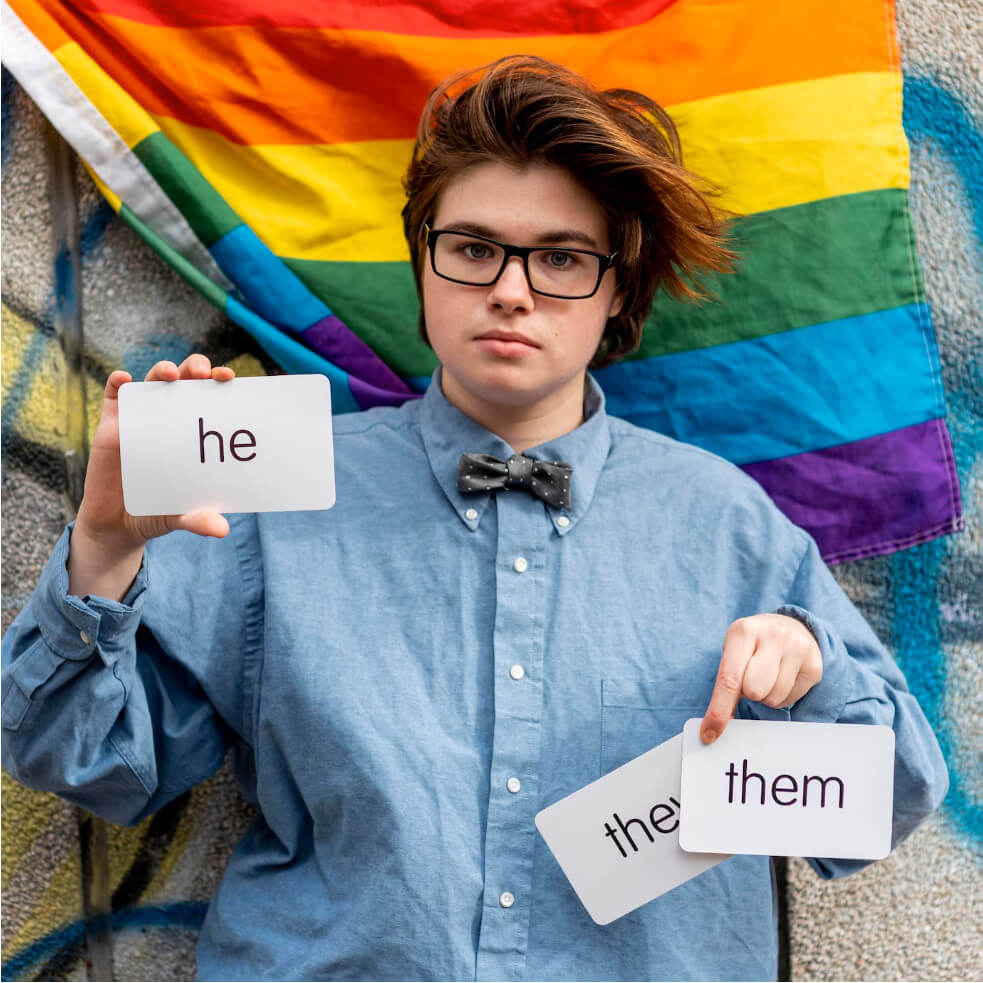 In many conversations, people use pronouns to refer to others, i.e., he, she, and they. When speaking about others, many people use pronouns with a gender implied (‘he/him’ to refer to a man/boy or ‘she/her’ to refer to a woman/girl). Often, people make assumptions about the gender of another based on that person’s appearance and/or the individual’s name. Assumptions are only sometimes correct, and making them could send a harmful message.
In many conversations, people use pronouns to refer to others, i.e., he, she, and they. When speaking about others, many people use pronouns with a gender implied (‘he/him’ to refer to a man/boy or ‘she/her’ to refer to a woman/girl). Often, people make assumptions about the gender of another based on that person’s appearance and/or the individual’s name. Assumptions are only sometimes correct, and making them could send a harmful message.
Why:
Using someone’s correct personal pronouns is a way to respect that person and create an inclusive environment, just as using a person’s name can be a way to respect them. Just as making up a nickname for someone, it can be disrespectful to guess someone’s pronouns and refer to the individual using those pronouns if that is not how that person wants to be known.
How:
When people share their pronouns, they name the pronouns they want to be referred to. People share their pronouns in the third person (other people talking about that person).
Examples:
- First Person: I know that pronouns can be challenging to understand at first.
- Second Person: You know that pronouns will take a while to get used to.
- Third person: [Insert Pronoun Here] knows that pronouns are important.
Common Pronouns and Examples:
- She/her: She is an artist who makes paintings by herself. Her parents think the art is stunning.
- He/him: He is a musician who makes music by himself. His friends think the music is excellent.
- They/them: They are a writer who makes books by themselves. Their co-workers think the books are inspiring.
Asking for Pronouns and Inclusionary Language:
If you are meeting someone face-to-face, you could say:
“Hi! My name is Ethan, and I use he/him. What do you want to be referred to by?”
If you know someone is gender-neutral in the room, use general, not gendered-based, statements to
make that person feel more comfortable and included.
- Say, “Yes, right away,” instead of “Yes, sir, right away.”
- Say, “The person with the green glasses,” instead of “The girl with the green glasses.”
- You could say “Colleagues” in a large group instead of “Ladies and gentlemen.”
- Instead of “Men and women,” you could say “Friends.”
- Instead of “Him” or “Her,” you could say “That person” or “That guest.”
What happens if a mistake is made:
Apologize and correct it. It isn’t necessary to make a big deal of it and draw unwanted attention, but a
simple “I’m sorry, I’m learning” will go a long way to right the wrong
